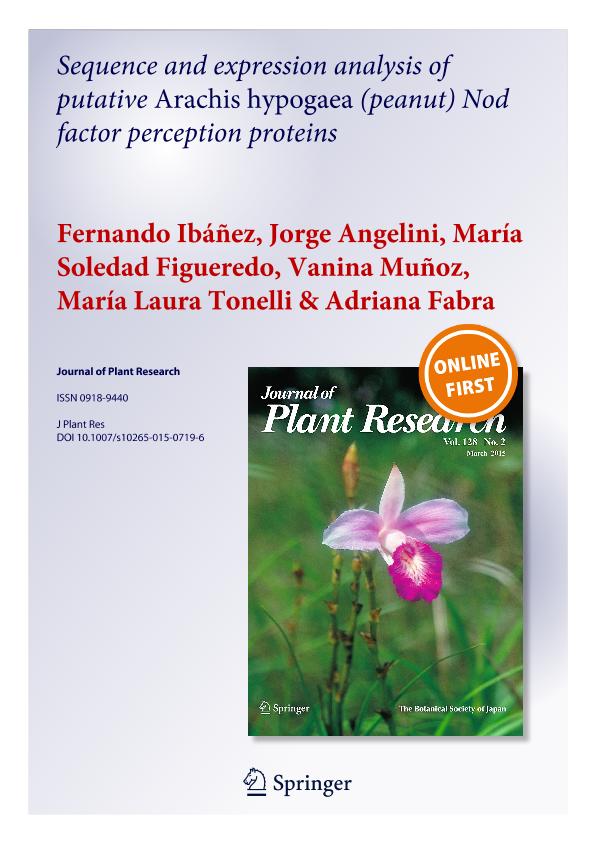Artículo
Sequence and expression analysis of putative Arachis hypogaea (peanut) Nod factor perception proteins
Ibañez, Fernando Julio ; Angelini, Jorge Guillermo
; Angelini, Jorge Guillermo ; Figueredo, María Soledad
; Figueredo, María Soledad ; Muñoz, Vanina Laura
; Muñoz, Vanina Laura ; Tonelli, Maria Laura
; Tonelli, Maria Laura ; Fabra, Adriana Isidora
; Fabra, Adriana Isidora
 ; Angelini, Jorge Guillermo
; Angelini, Jorge Guillermo ; Figueredo, María Soledad
; Figueredo, María Soledad ; Muñoz, Vanina Laura
; Muñoz, Vanina Laura ; Tonelli, Maria Laura
; Tonelli, Maria Laura ; Fabra, Adriana Isidora
; Fabra, Adriana Isidora
Fecha de publicación:
03/2015
Editorial:
Springer Tokyo
Revista:
Journal of Plant Research
ISSN:
0918-9440
Idioma:
Inglés
Tipo de recurso:
Artículo publicado
Clasificación temática:
Resumen
Peanut, like most legumes, develops a symbiotic relationship with rhizobia to overcome nitrogen limitation. Rhizobial infection of peanut roots occurs through a primitive and poorly characterized intercellular mechanism. Knowledge of the molecular determinants of this symbiotic interaction is scarce, and little is known about the molecules implicated in the recognition of the symbionts. Here, we identify the LysM extracellular domain sequences of two putative peanut Nod factor receptors, named AhNFR1 and AhNFP. Phylogenetic analyses indicated that they correspond to LjNFR1 and LjNFR5 homologs, respectively. Transcriptional analysis revealed that, unlike LjNFR5, AhNFP expression was not induced at 8 h post bradyrhizobial inoculation. Further examination of AhNFP showed that the predicted protein sequence is identical to GmNFR5 in two positions that are crucial for Nod factor perception in other legumes. Analysis of the AhNFP LysM2 tridimensional model revealed that these two amino acids are very close, delimiting a zone of the molecule essential for Nod factor recognition. These data, together with the analysis of the molecular structure of Nod factors of native peanut symbionts previously reported, suggest that peanut and soybean could share some of the determinants involved in the signalling cascade that allows symbiosis establishment.
Archivos asociados
Licencia
Identificadores
Colecciones
Articulos(CCT - CORDOBA)
Articulos de CTRO.CIENTIFICO TECNOL.CONICET - CORDOBA
Articulos de CTRO.CIENTIFICO TECNOL.CONICET - CORDOBA
Citación
Ibañez, Fernando Julio; Angelini, Jorge Guillermo; Figueredo, María Soledad; Muñoz, Vanina Laura; Tonelli, Maria Laura; et al.; Sequence and expression analysis of putative Arachis hypogaea (peanut) Nod factor perception proteins; Springer Tokyo; Journal of Plant Research; 128; 4; 3-2015; 709-718
Compartir
Altmétricas



